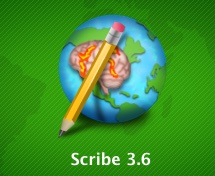Prose
Prose Description is for functional papers only.
The Prose section serves as a concise summary of the purpose and experimental design without covering background, results or discussion. This section should be written in third person, past tense with fields containing concise, specific information for each condition and experiment so that a reader will fully understand the experimental design of the study.
The Prose Description is broken into six categories:
Purpose, Hypothesis, Sessions, Methods, Conditions and Experiments.
Purpose
The Purpose section can usually taken directly from the Introduction of the paper, frequently from the last paragraph.
Hypothesis
Because the hypothesis is not always clearly stated in an article, this section can be omitted if the author does not explicitly state the expectations.
Sessions
The sessions section is only included if multiple scanning sessions were done, otherwise it can be omitted.
Methods
Focuses on the experimental design being used, the response being observed (if any), and the instructions given to the subjects. Any relevant or important details such as training or follow-up information can also be included. Details will vary per submission.
Conditions
Describes the conditions in a chronological sense. For example, “subjects viewed a series of letters; after a delay, subjects viewed a probe letter and recalled if the probe letter had been one of the encoded letters”.
The first letter in all words in the names of conditions and the names of experiments should be capitalized.
Experiments
The names of experiments should be taken directly from the coordinate tables or figures in the papers. Some experiment names explicitly state the conditions in them: “Finger Tapping – Rest” or “Finger Tapping vs. Rest” or “Finger Tapping > Rest”, and some do not: “Motor Directed Attention” or “Conjunction Analysis”. Adopt the naming convention used in the paper.
For conjunction and disjunction analyses, normally all conditions are used in all experiments unless the experiment indicates which conditions were used in each experiment. (See Thierry, 2003)
Some papers report increases and decreases in activation. Be sure to inspect the coordinate tables carefully, as authors frequently present each in the same table. Increases and decreases should be coded and named as separate experiments. For example, a study may investigate motor function and acquire data on two conditions, Finger Tapping and Rest. The coordinate table may be titled “Increases” and “Decreases” and the paper is coded with two experiments, not one.
Caveats
• Most information needed can be found directly in the original article. Prose Description should strictly reflect the author’s work or opinions without the submitter's personal input or bias.
• Abbreviations are acceptable, but must be defined the first time they are used. Subsequent references can just be entered in the abbreviated form.
• To keep the prose description as concise as possible, do not repeat information in both the Methods and Conditions sections. This can be done in one of two ways: The Conditions can be defined in the Methods section then only listed under the Conditions header, or they can be stated in the Methods, then defined in more detail under the Conditions header.
• Do not include region-of-interest (ROI) experiments, but document this in the feedback panel.
• Avoid use of the word “task” in the condition (and experiment) name. For example, “Finger Tapping Task” should be named “Finger Tapping”.
• If “Rest” is used as a control condition, list it last. The conditions “Rest” and “Fixation” do not require a description.


